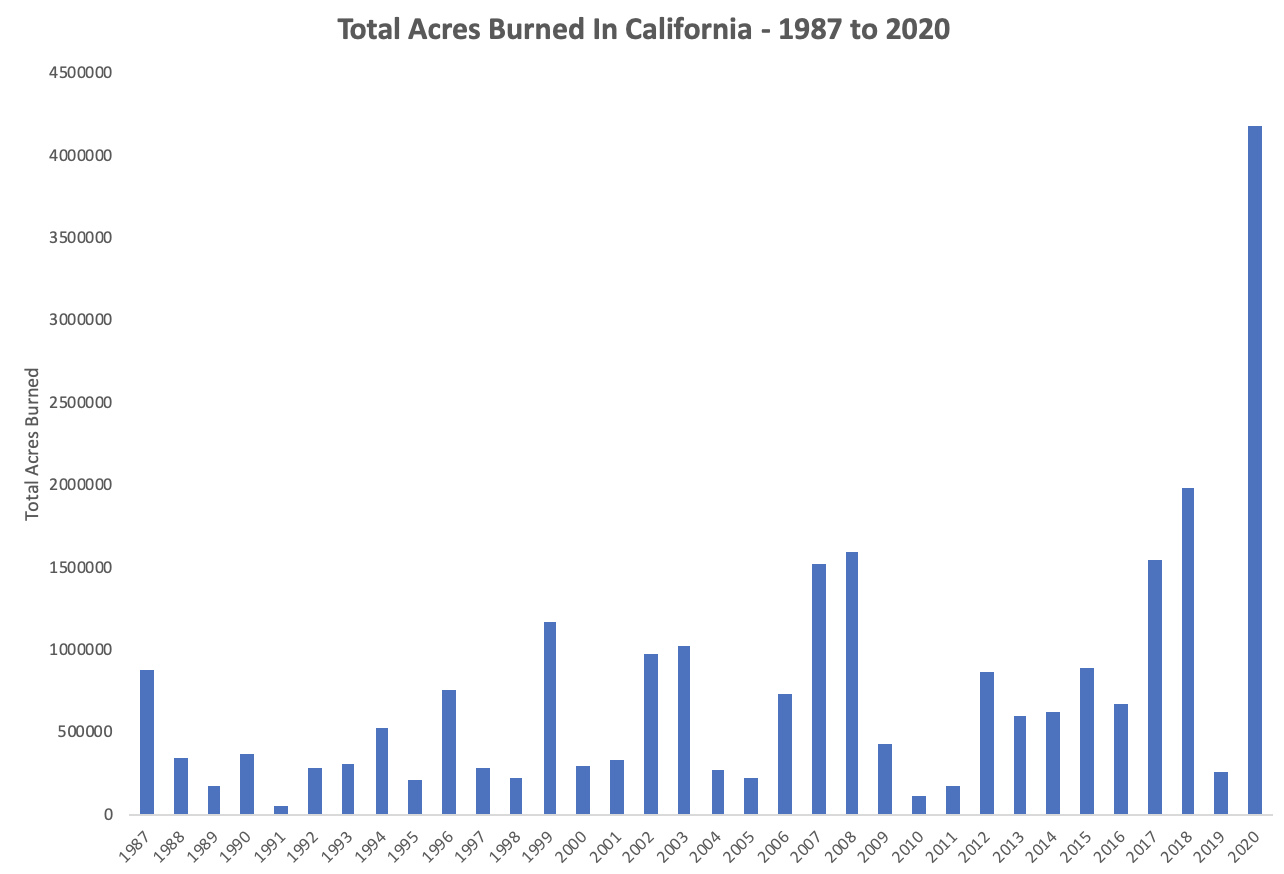3.4: Data Dive- California Wildfires
- Page ID
- 46687
Overview
When the United States Forest Service was established in 1905 it was declared that, “Today we understand that forest fires are wholly within the control of men.” Humanity assumes time and time again that nature can be controlled, and the National Forest Service were shown how wrong their assumption was 5 years later… The Great Fire of 1910 burned about 3 million acres and killed 86 people. As a consequence of this fire, serious fire suppression policies were put in place and Smokey The Bear was slapped onto posters to represent the cause. At that point, Smokey the Bear told us, "only you can prevent forest fire," indicating that all fire is bad. It has only been in the last couple decades have these policies been questioned and the repercussions of fire suppression of them realized. Now Smokey has updated the saying to, "only you can prevent wildfire," indicating that only some types of fire are bad. The figure below illustrates the number of acres burned in California between 1987 and 2020:

Figure \(\PageIndex{a}\): Total acres burned through the years in California. Graph created by Rachel Schleiger (CC-BY-NC) modified from data collected by CalFire
Questions
- What kind of graph is this?
- What is the independent (explanatory) variable and the dependent (response) variable?
- What question(s) are the authors trying to answer with this graph?
- What trend(s) can be observed in this graph? Support your answer by referring to appropriate patterns in the graph.
- How can we use the results of this graph to inform future fire policies/projects/etc?
- What does the results of this graph make you curious about?
Raw Data For Above Graph(s)
Table \(\PageIndex{a}\): Raw data table of total acres burned through the years in California. Table by Rachel Schleiger (CC-BY-NC) modified from data collected by CalFire
| Year | Total Acres Burned |
|---|---|
| 1987 | 873000 |
| 1988 | 345000 |
| 1989 | 173400 |
| 1990 | 365200 |
| 1991 | 44200 |
| 1992 | 282745 |
| 1993 | 309779 |
| 1994 | 526219 |
| 1995 | 209815 |
| 1996 | 752372 |
| 1997 | 283885 |
| 1998 | 215412 |
| 1999 | 1172850 |
| 2000 | 295026 |
| 2001 | 329126 |
| 2002 | 969890 |
| 2003 | 1020460 |
| 2004 | 264988 |
| 2005 | 222538 |
| 2006 | 736022 |
| 2007 | 1520362 |
| 2008 | 1593690 |
| 2009 | 422147 |
| 2010 | 109529 |
| 2011 | 168545 |
| 2012 | 869599 |
| 2013 | 601635 |
| 2014 | 625540 |
| 2015 | 893362 |
| 2016 | 669534 |
| 2017 | 1548429 |
| 2018 | 1975086 |
| 2019 | 259823 |
| 2020 | 4177856 |
Attributions
Rachel Schleiger (CC-BY-NC)


